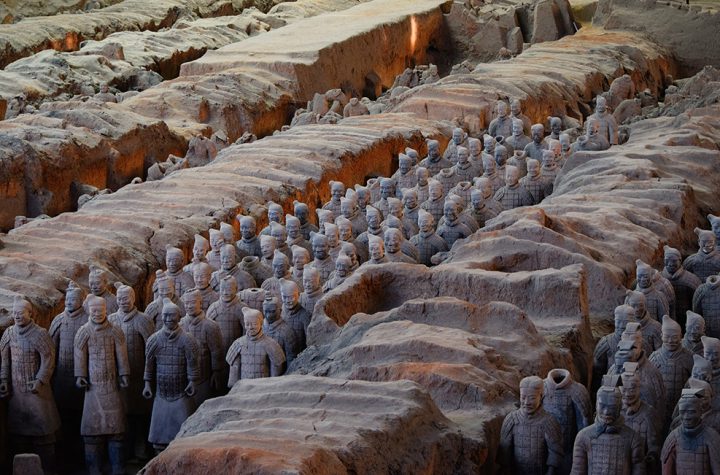
Shortly after arriving at Auschwitz on June 14, 1944, 14-year-old Sheindi Ehrenwald stood with other inmates, naked, her head shaved and dripping with disinfectant.An SS officer was present. After inspecting the group, he ordered the wardens to take Sheindis 12-year-old sister, Dori, to his quarters. The man, she later realized, was
Josef Mengele,
a physician notorious for conducting grotesque experiments on Jewish prisoners, many of them children. Dori never made it out of the camp.
The episode is part of the diary that Sheindi Miller, as she is now called, secretly kept while she was a prisoner in Auschwitz, the most notorious Nazi extermination camp. At the risk of her life, Ms. Miller wrote down the details of her ordeal, including her work as a slave laborer for an arms manufacturer. Written in Hungarian, it is a rare and possibly unique document, recording the plight of European Jews toward the end of World War II, as Nazi Germany redoubled its efforts to exterminate them.
This week, Ms. Millers diary was exhibited to the public for the first time at the German History Museum in Berlin. The exhibition, which includes a film about her life, is part of Germanys official commemoration of the 75th anniversary of the liberation of Auschwitz by the Red Army, on Jan. 27, 1945.
Ms. Millers diary starts where the diary of
Anne Frank
stopped, said
Thomas Jander,
who co-curated the exhibition. Franks famous diary broke off when she and her family were arrested in Amsterdam and deported to Auschwitz, while Ms. Millers tells the story of what happened after she arrived there.
Ms. Miller, 90, survived World War II and emigrated to Israel, where she kept her journals in the kitchen cupboard of her Jerusalem home for 70 years. For decades, she said, she was unable even to speak to her children about the Holocaust, let alone seek publication of her writings.
SHARE YOUR THOUGHTS
What lessons do you think the world can learn from the 75th anniversary of the liberation of Auschwitz? Join the conversation below.
They might have stayed there, forgotten, if it hadnt been for a friend of the family who mentioned the diary to reporters at Bild, Germanys highest-circulation newspaper, last year. The journalists visited Ms. Miller in Jerusalem and persuaded her to publish it in Bild.
She agreed, she said, partly because of her anxiety about the current resurgence of anti-Semitism in Europe. When I was writing the diary, my greatest fear was that a German would read it, Ms. Miller said this week. Today, 76 years later, my greatest joy is that Germans are reading it.
Wolfgang Schäuble,
president of the German parliament, who inaugurated the exhibition on Wednesday, said that the diary was an invaluable bulwark in the fight against anti-Semitism. Today every word of your densely written manuscript on the yellowed index cards of the arms factory is a unique document for posterity54 pages of priceless historic value, emotional vehemence and a legacy against oblivion, Mr. Schäuble said.
The publication of the diary comes as Germany is experiencing a rise in anti-Semitic crimes, from verbal abuse of Jews to threats and physical attacks. Last year on Yom Kippur, the most sacred Jewish holiday, a gunman attempted to attack a synagogue in Halle, leaving two dead.
Ms. Miller began to keep her diary in March 1944, on the day that German troops invaded Hungary. Over the next three months, more than 400,000 Hungarian Jews were transported to Auschwitz, with eager assistance from local authorities. Most of them were killed on arrival.
In the night there was a loud banging on the door, Ms. Miller wrote in April 1944. My father opened and there were three Hungarian gendarmes in front of him and they ordered him to leave the house. He turned round with tears and said: Dont cry, be strong. Well return soon. But we never returned.
The diary offers a graphic account of the train transport to Auschwitz. Ms. Miller and her family were thrown into cattle cars with dozens of other people. When an infant died of exhaustion, she recounts, Nazi soldiers snatched the corpse away from her mother and threw it off the train. The poor motherwont even know where shell be buried, she wrote. Life is hard and humans can take more than animals.
When the transport arrived in Auschwitz, Ms. Millers grandparents, parents and two of her siblings were deemed unfit for work and taken to the gas chambers. The next morning, she awoke to the suffocating smell of burned human bodies. Were burning your parents now, a soldier told the prisoners.
“
On index cards that she hid in the dank walls of her prison barrack, Ms. Miller described her ordeals.
”
On index cards that she hid in the dank walls of her prison barrack, Ms. Miller described further ordeals. The female inmates were made to undress in front of soldiers: We undressed. The men ran around the room laughing, we stood around naked and deeply ashamed.
Ms. Miller survived in part because she was assigned to work in a factory, making grenades and bombshells for
Karl Diehl,
a German arms manufacturer that still exists today. In 1998, Diehl Stiftung & Co. KG, as the company was later renamed, paid her the equivalent of around $5,000without admission of legal responsibility, according to letters by company representatives now included in the exhibition.
There is no question that the Diehl reparation fund was created late, but it still was the first of its kind in Germany, a company spokesman said in a statement. The company took a step that most of the German industry was at the time not prepared to take. He added that Diehl welcomed the new exhibition and documentary.
Before World War II, the Jewish population of Galanta, Ms. Millers hometown, was around 1,500. She was one of only 150 survivors to return; four of her seven siblings perished. In 1949, she moved to the newly founded state of Israel, where, she said, life was hard in the early years. Her oldest son, a paratrooper, died in the Yom Kippur War in 1973, at age 20.
Last week, Ms. Miller traveled to Berlin in the company of 24 members of her extended family, including two of her 40 great-grandchildren. She summoned them on stage at the exhibitions opening on Wednesday. Until my daughter married, I had not had more than a few weeks of happy times. But now, looking at my big family, I think my life was worth itand I am still young, only 90! she exclaimed.
She added that the publication of her diaries in Germany is the crowning achievement of her long struggle. We have won, she said.
Write to Bojan Pancevski at bojan.pancevski@wsj.com
Copyright ©2019 Dow Jones & Company, Inc. All Rights Reserved. 87990cbe856818d5eddac44c7b1cdeb8





More Stories
As the pandemic wreaks havoc on TV and movie ‘love lives’, intimacy coordinators need to find ways to adapt